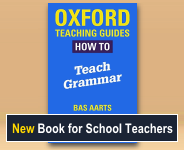Synonymy (Stein)
Please note: there are two pages of activities for this lesson.
Activity 1
Start by explaining the meaning of the term synonym. For an example, ask learners to think of some synonyms for the word 'argument'.
In the next slide, show the two possible examples. Ask learners if these two words have the exact same meaning or if there are any subtle differences. Try asking learners in what situations they would/would not use each word.
Show the differences between the two words in the next slide, and check if your learners agree.
Activity 2
Next, learners will have a go at matching some synonym pairs together. Ask them to copy down the words in the drag-and-drop activity and match the pairs individually before checking on the board as a whole class.
Make sure to pair the words in order (1-2), otherwise the activity will mark you as incorrect. Drag and drop the cards together to connect, and double click to unpair them.
Next, you will examine how these synonyms are used in different contexts. Read through the first slide and disuss any questions with your learners.
In the next slide, you will look back at three pairs of words from the previous activity. Ask learners to discuss the questions in pairs or small groups before feedingback as a whole class. The next slide provides some answers: check if your learners agree.
Activity 3
Next, learners will look at more examples of synonyms. Show them the list of eight words. For each word they must think of a synonym and discuss which is more everday and which is used in a particular context. Put the learners into pairs or small groups to discuss.
In the next slide, reveal some possible solutions. Discuss as a whole class which words are more everday and which are only used in particular contexts.
Next, give the instrucitons for the organising activity. Learners need to copy down the table and organise the words into the most appropriate category. Check answers as a whole class on the board.
USA: Elevator, Zucchini
Child: Bunny, Choo choo
Literary: Looking glass, Steed
Medical: Stomach, Spine
Everyday: Courgette, Mirror, Train, Lift, Horse, Rabbit, Backbone, Belly
Activity 4
Ask them to look back at the lesson and choose five pairs of synonyms. For each pairs, learners write two sentences, using the word in the appropriate context. Then, learners check with a partner and evaluate how well they have used the words. Ask learners to write some pairs on the board to share with the whole class.
Activity 5
Next, move on to the following page of activities. The last lesson focussed on nouns, but other words, like adjectives, can also be synonyms.
Use the questions to refresh your learners' memories and prepare them for this lesson on adjectives.
Once you've discussed those question as a whole class, move on to the next slide. Ask learners to read the two sentences and to identiify the pair of adjective synonyms (old/elderly).
Feedback as a whole class, and then disucss the questions. Just like with nouns, synonymous adjectives are used for different situations and contexts. In this example, sentence 1 is more everyday and casual whereas sentence 2 is more formal.
Activity 6
In this activity, learners will look at more examples of adjective synonyms. Make sure learners copy down the words as they will need them in the next task. Ask learners to pair together the synonyms, and then check as a whole class by using the interactive activity. Makes sure to put the worders in order (1-2) or the activity will be marked as incorrect.
After pairing the synonyms, move on to the next slide. Learners must use the adjectives from the previous activity to fill the gaps in the sentences. Ask learners to try individually and then check in pairs or small groups. Use the next slide to check the answers as a whole class.
Discuss why each word was chosen for each sentence. Is it possible to swap with another synonym? Does the meaning or emphasis change? Finish by asking learners to write a definition of each adjective, using a dictionary to help.
Activity 7
Explain to learners that verbs can also have antonyms. Show them the list of six verbs and ask them to write an antonym for each. Check the answers on the next slide and accept any reasonable alternatives.
Finally, ask learners to write pairs of sentence for each verb and antonym. Share the best with the whole class and discuss how the words are used for different contexts and purposes.
This lesson is adapted (with permission) from Words and Meanings: A Systematic Guide for the Teaching of English Vocabulary, by Gabriele Stein.
Welcome!

Englicious is totally free for everyone to use!
But in exchange, we ask that you register for an account on our site.
If you’ve already registered, you can log in straight away.
Since this is your first visit today, you can see this page by clicking the button below.
- Printer-friendly version
- Log in to view or leave comments

